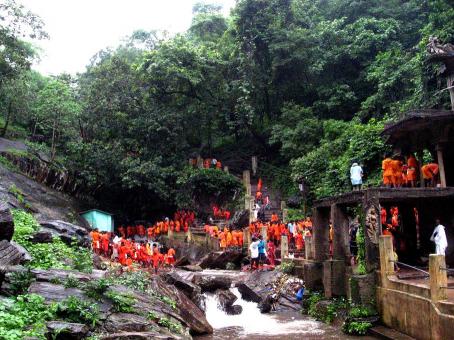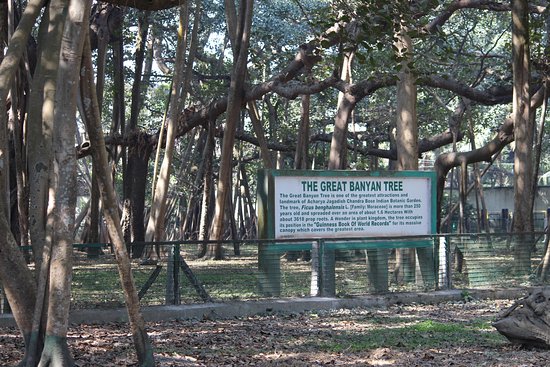|
Gandhamardhan Hills
Gandhamardan Hills or Gandhamardan Parbat ( or, ଗନ୍ଧମାର୍ଦନ ପର୍ବତ) is a hill located in between Balangir and Bargarh district of Odisha, India. This hill is well known for medicinal plants. There is a Bauxite reserve which is planned for exploration by the state government through a private venture. Lord Hanuman is believed to reside here and in the Piduru Mountains in Sri Lanka. Theology According to Hinduism, Lord Hanuman carried this hill on his shoulders from Himalayas to save the life of Lakshman. In the Treta Yug, Sushena (the expert physician from Lanka who was chief of medicines, Shri Hanumana requested him and carried him with his entire palace to the place where Shri Laxmana was lying injured) had suggested Vir Hanuman to bring Bisalyakarani ere dawn, so that Laxman would rise back to life. It was in the middle of the war between Lord Ram and Ravan. Hanuman failed to identify the particular herb and carried on his shoulders a huge Himalay ... [...More Info...] [...Related Items...] OR: [Wikipedia] [Google] [Baidu] |
Bargarh District
Bargarh District is an administrative district of Odisha state in eastern India. The city of Bargarh is its district headquarters. The district was carved out of the erstwhile district of Sambalpur on 1 April 1993. History In ancient times, Bargarh was part of Dakshina Kosala, along with large parts of western Odisha and the plains of Chhattisgarh. The region was most likely in the pre-Maghadan empire of Mahapadmananda. However there is no mention of the territory in Mauryan inscriptions, so it is unknown whether the Mauryans controlled Dakshina Kosala. After the collapse of the Mauryan empire, Dakshina Kosala became ruled by the Chedis. It was from Dakshina Kosala and Kharavela's ancestors came to Kalinga. Dakshina Kosala was most likely part of Kharavela's empire. After Kharevala, the Megha dynasty ruled the region. In the 4th century CE, the Allahabad inscription records Samudra Gupta defeated Mahendra of Kosala, corresponding roughly to present day Chhattisgarh plain ... [...More Info...] [...Related Items...] OR: [Wikipedia] [Google] [Baidu] |
Nrusinghanath Temple
Sri Nrusinghanatha, is a temple of Odisha, India, situated at the foothills of Gandhamardhan hills near Paikmal, Bargarh. The King of Patna State, Patna, Baijal Deva laid the foundation of this historic temple in early 15th century CE. It is only 45 feet in height, divided into two parts: the first being the seat of the Lord Narasimha, Nrusinghnath, the second allotted to Jagamohan (antechamber having 3 gates and each supported by 4 pillars. History Around six hundred years ago, a woman Jamuna Kandhuni as referred in the book "Nrusingha Charitra" in Odia language composed a Kavya that sings the glory of Marjara Keshari in regard to suppression and repression of torture and tyranny of Musika Daitya. According to the legend, when people were greatly afflicted by Musika Daitya (the incarnate Mouse Demon), Vishnu Mani in the appearance(Incarnation) of Marjara Keshari, in His Feline Form, ran to eat the demonic mouse form - Musika Daitya who never came out from the tunnel and Marjara ... [...More Info...] [...Related Items...] OR: [Wikipedia] [Google] [Baidu] |
Hills Of Odisha
A hill is a landform that extends above the surrounding terrain. It often has a distinct summit. Terminology The distinction between a hill and a mountain is unclear and largely subjective, but a hill is universally considered to be not as tall, or as steep as a mountain. Geographers historically regarded mountains as hills greater than above sea level, which formed the basis of the plot of the 1995 film ''The Englishman who Went up a Hill but Came down a Mountain''. In contrast, hillwalkers have tended to regard mountains as peaks above sea level. The ''Oxford English Dictionary'' also suggests a limit of and Whittow states "Some authorities regard eminences above as mountains, those below being referred to as hills." Today, a mountain is usually defined in the UK and Ireland as any summit at least high, while the official UK government's definition of a mountain is a summit of or higher. Some definitions include a topographical prominence requirement, typically or ... [...More Info...] [...Related Items...] OR: [Wikipedia] [Google] [Baidu] |
Dabur
Dabur Ltd is an Indian multinational consumer goods company, founded by S. K. Burman and headquartered in Ghaziabad. It manufactures Ayurvedic medicine and natural consumer products, and is one of the largest fast-moving consumer goods (FMCG) companies in India. Dabur derives around 60% of its revenue from the consumer care business, 11% from the food business and remaining from the international business unit. History Dabur was founded in Kolkata by Dr. S. K. Burman in 1884. Burman's family had migrated from Punjab to Kolkata and are Punjabi Khatris by origin. In the mid-1880s, as an Ayurvedic practitioner in Kolkata, he formulated Ayurvedic medicines for diseases like cholera, constipation and malaria. As a qualified physician, he went on to sell his medicines in Bengal on a bicycle. His patients started referring him and his medicines as "Dabur", a portmanteau of the words ''daktar'' (doctor) and Burman. He later went on to mass-produce his Ayurvedic formulations. C.L. Bur ... [...More Info...] [...Related Items...] OR: [Wikipedia] [Google] [Baidu] |
Ayurveda
Ayurveda () is an alternative medicine system with historical roots in the Indian subcontinent. The theory and practice of Ayurveda is pseudoscientific. Ayurveda is heavily practiced in India and Nepal, where around 80% of the population report using it. Ayurveda therapies have varied and evolved over more than two millennia. Therapies include herbal medicines, special diets, meditation, yoga, massage, laxatives, enemas, and medical oils. Ayurvedic preparations are typically based on complex herbal compounds, minerals, and metal substances (perhaps under the influence of early Indian alchemy or ''rasashastra''). Ancient Ayurveda texts also taught surgical techniques, including rhinoplasty, kidney stone extractions, sutures, and the extraction of foreign objects. The main classical Ayurveda texts begin with accounts of the transmission of medical knowledge from the gods to sages, and then to human physicians. Printed editions of the '' Sushruta Samhita'' (''Sushruta's Compen ... [...More Info...] [...Related Items...] OR: [Wikipedia] [Google] [Baidu] |
Botanical Survey Of India
Botanical Survey of India (BSI) located in Kolkata, West Bengal, India. It was founded on 13 February 1890, is Government of India Ministry of Environment, Forest and Climate Change's organization for survey, research and conservation of plant wealth of India, flora and endangered species of India, including by collecting and maintaining germplasm and gene bank of endangered, patent and vulnerable plant species. History BSI was formally instituted by East India Company (EIC) on 13 February 1890Botanical Survey of India (BSI) "History", Botanical Survey of India. under the direction of Sir who became first ex-officio director, earlier he had bee ... [...More Info...] [...Related Items...] OR: [Wikipedia] [Google] [Baidu] |
Stanislas Julien
Stanislas Aignan Julien (13 April 179714 February 1873) was a French sinologist who served as the Chair of Chinese at the Collège de France for over 40 years and was one of the most academically respected sinologists in French scholarship. Julien was a student of Jean-Pierre Abel-Rémusat, and succeeded him as the chair of Chinese at the Collège de France upon Rémusat's death in 1832. The quantity and quality of Julien's scholarship earned him wide renown, and caused him to become the leading European scholar of China during the 19th century. Along with Sebastien Couvreur and among 19th-century scholars of China, Julien's academic reputation was rivaled only by the Scottish sinologist James Legge, and no sinologist equaled his academic reputation until Édouard Chavannes at the turn of the 20th century. Notwithstanding his academic rigor and gifted intellect, Julien had a notoriously thorny personality and publicly feuded with most of his contemporaries, earning broad aca ... [...More Info...] [...Related Items...] OR: [Wikipedia] [Google] [Baidu] |
Hiuen-Tsiang
Xuanzang (, ; 602–664), born Chen Hui / Chen Yi (), also known as Hiuen Tsang, was a 7th-century Chinese Buddhist monk, scholar, traveler, and translator. He is known for the epoch-making contributions to Chinese Buddhism, the travelogue of his journey to India in 629–645 CE, his efforts to bring over 657 Indian texts to China, and his translations of some of these texts.Li Rongxi (1996), ''The Great Tang Dynasty Record of the Western Regions'', Bukkyo Dendo Kyokai and Numata Center for Buddhist Translation and Research, Berkeley, , pp. xiii-xiv Xuanzang was born on 6 April 602 in Chenliu, what is now Kaifeng municipality in Henan province. As a boy, he took to reading religious books, and studying the ideas therein with his father. Like his elder brother, he became a student of Buddhist studies at Jingtu monastery. Xuanzang was ordained as a ''śrāmaṇera'' (novice monk) at the age of thirteen. Due to the political and social unrest caused by the fall of the Sui dynasty ... [...More Info...] [...Related Items...] OR: [Wikipedia] [Google] [Baidu] |
Nagarjuna
Nāgārjuna . 150 – c. 250 CE (disputed)was an Indian Mahāyāna Buddhist thinker, scholar-saint and philosopher. He is widely considered one of the most important Buddhist philosophers.Garfield, Jay L. (1995), ''The Fundamental Wisdom of the Middle Way'', Oxford: Oxford University Press. Jan Westerhoff considers him to be "one of the greatest thinkers in the history of Asian philosophy." Nāgārjuna is widely considered to be the founder of the Madhyamaka (centrism, middle-way) school of Buddhist philosophy and a defender of the Mahāyāna movement. His ''Mūlamadhyamakakārikā'' (Root Verses on Madhyamaka, or MMK) is the most important text on the madhyamaka philosophy of emptiness. The MMK inspired a large number of commentaries in Sanskrit, Chinese, Tibetan, Korean and Japanese and continues to be studied today. History Background India in the first and second centuries CE was politically divided into various states, including the Kushan Empire and the Satavaha ... [...More Info...] [...Related Items...] OR: [Wikipedia] [Google] [Baidu] |
Nagarjunakonda
Nagarjunakonda (IAST: Nāgārjunikoṇḍa, meaning Nagarjuna Hill) is a historical town, now an island located near Nagarjuna Sagar in Palnadu district of the Indian state of Andhra Pradesh, near the state border with Telangana. It is one of India's richest Buddhist sites, and now lies almost entirely under the lake created by the Nagarjuna Sagar Dam. With the construction of the dam, the archaeological relics at Nagarjunakonda were submerged, and had to be excavated and transferred to higher land, which has become an island. The site was once the location of a large Buddhist monastic university complex, attracting students from as far as China, Gandhara, Bengal and Sri Lanka. There are ruins of several Mahayana Buddhist and Hindu shrines. It is 160 km west of another important historic site, the Amaravati Stupa. The sculptures found at Nagarjunakonda are now mostly removed to various museums in India and abroad. They represent the second most important group in the dis ... [...More Info...] [...Related Items...] OR: [Wikipedia] [Google] [Baidu] |
Drona
Droṇa ( sa, द्रोण, Droṇa), also referred to as Dronacharya ( sa, द्रोणाचार्य, Droṇācārya), is a major character of the Hindu epic Mahabharata. In the epic, he serves as the royal preceptor of the Kauravas and the Pandavas. He is one of the primary counsellors and warriors featured in the epic. He is a friend of Sukracharya, the guru of the asuras, as well as Mahabali. He is described to be the son of the sage Bharadvaja, and a descendant of the sage Angirasa. The preceptor is a master of advanced military arts, including the divine weapons known as astras. He serves as the second commander-in-chief of the Kaurava army, from the 11th day to the 15th day. The acharya fails four times in capturing Yudhishthira (The 11th day, 12th day, 14th day, and the 14th night). He is beheaded by Dhrishtadyumna when he meditates to release his soul on the battlefield. It is said that Drona is an incarnation of Brihaspati. He is guru to the Pandavas, Kau ... [...More Info...] [...Related Items...] OR: [Wikipedia] [Google] [Baidu] |






.jpg)
